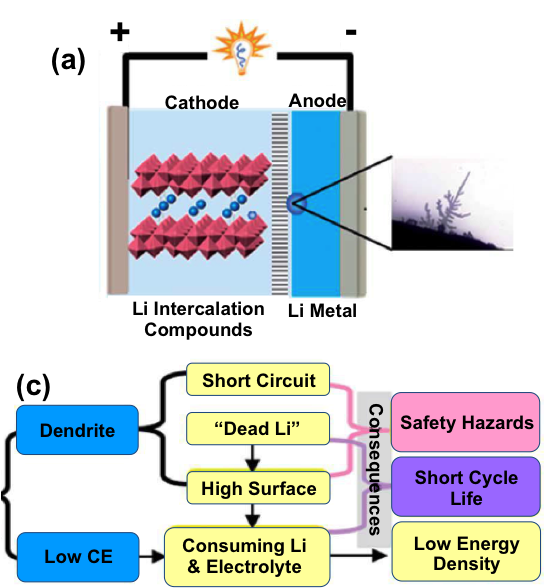
Scientific Achievement
- Various factors affecting the morphology and Coulombic efficiency of Li metal anodes have been analyzed
- Theories and experimental approaches on the Li dendrite prevention have been reviewed
- New approaches on the Li-metal protection are proposed and discussed
Significance and Impact
- Li metal is an ideal anode material for rechargeable batteries beyond Li ion
- The review and analysis on results reported in literature point out the ways to suppress Li dendrite growth and to improve Li Coulombic efficiency
- Provide new perspectives for the application of Li metal as anode in rechargeable batteries in the near future
Research Details
- Reviewed the models for Li dendrite growth
- Discussed the characterization of Li surface morphology and the analysis of Li surface films
- Analyzed Li dendrite prevention by in situ-formed SEI film, ex situ-formed surface coating, mechanical blocking, and self-healing electrostatic shield mechanisms
Work performed at Pacific Northwest National laboratory (JCESR Partner) Wu Xu, Jiulin Wang, Fei Ding, Xilin Chen, Eduard Nasybulin, Yaohui Zhang, Ji-Guang ZhangWu, “Lithium metal anodes for rechargeable batteries,” Energy Environ. Sci., 2014, 7 (2), 513-537.

